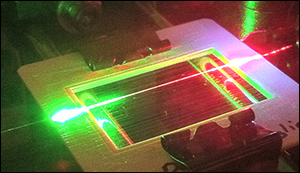Spider Silk Sensors Could Search for Life on Mars
26. 10. 2015 | IEEE Spectrum | spectrum.ieee.org
Optical sensors made with spider silk could be used to look for trace gases produced by biological processes, according to a researcher who showed how silk could be used in place of conventional optical fibers.
The scientists hunting for life on Mars would like to be able to test for small amounts of ammonia, which might be emitted by the metabolism of microbes, so they need a sensor that can detect that while remaining insensitive to the large amounts of carbon dioxide in the Martian atmosphere.

Spider silk does the trick, says Luc Thévanaz, who heads a research group studying fiber optics and optical sensing at Swiss Federal Institute of Technology of Lausanne. The fiber can carry a beam of light, and when something in the environment affects the fiber, that alters some characteristic of the light beam. The concept is used in strain sensing for bridges and other large structures: If the fiber stretches, it changes the spacing of an optical grating inside, altering the wavelength of the light passing through and alerting monitors to the amount of strain.
Thévanaz and his team tested their concept using the silk dragline from a female Nephila edulis spider. They found they could get good light transmission from the visible to the infrared, up to wavelengths of about 1400 nm. Their best transmission was infrared light at 900 nm, which had optical loss of 4 dB/cm, a measure of how far the light can travel before being absorbed by the material.
Read more at IEEE Spectrum
Image Credit: EPFL
-jk-




